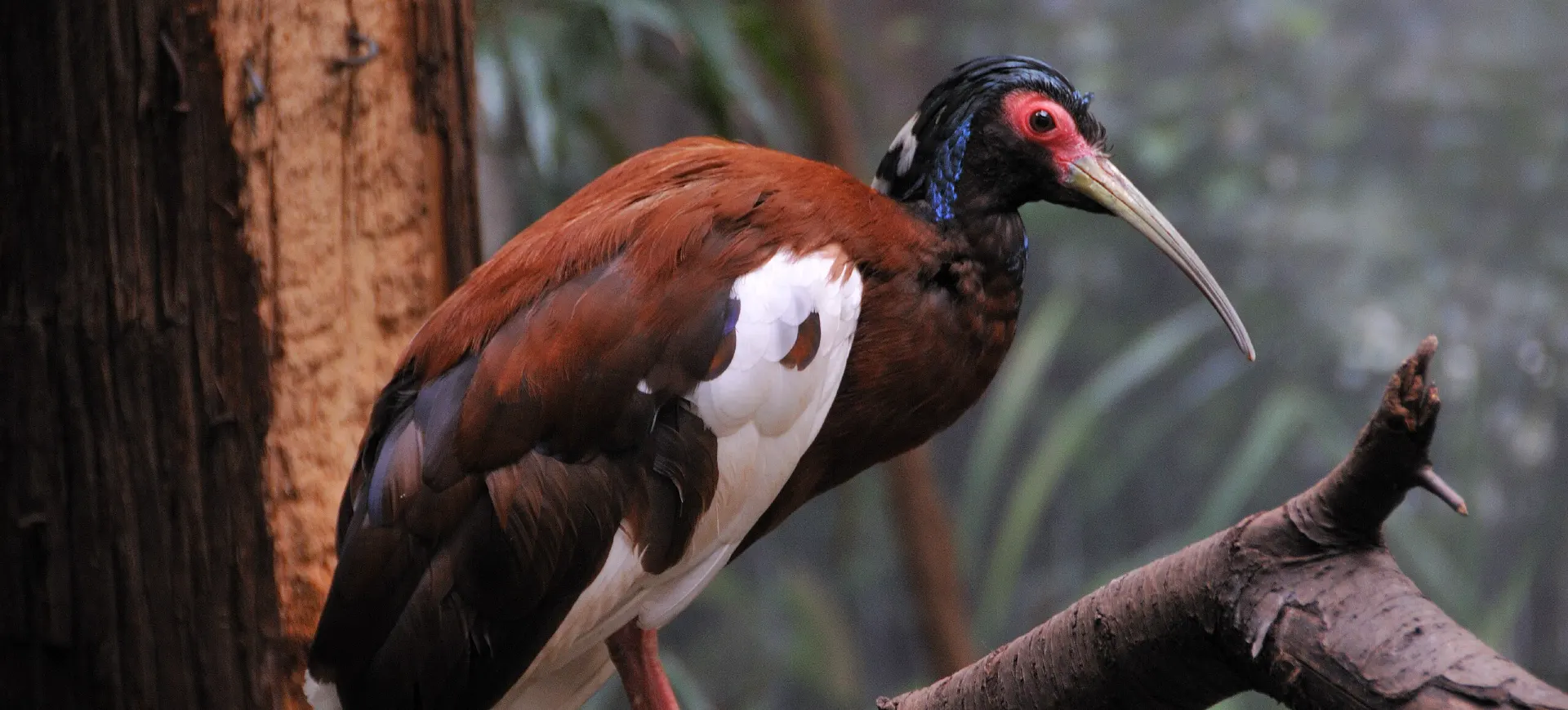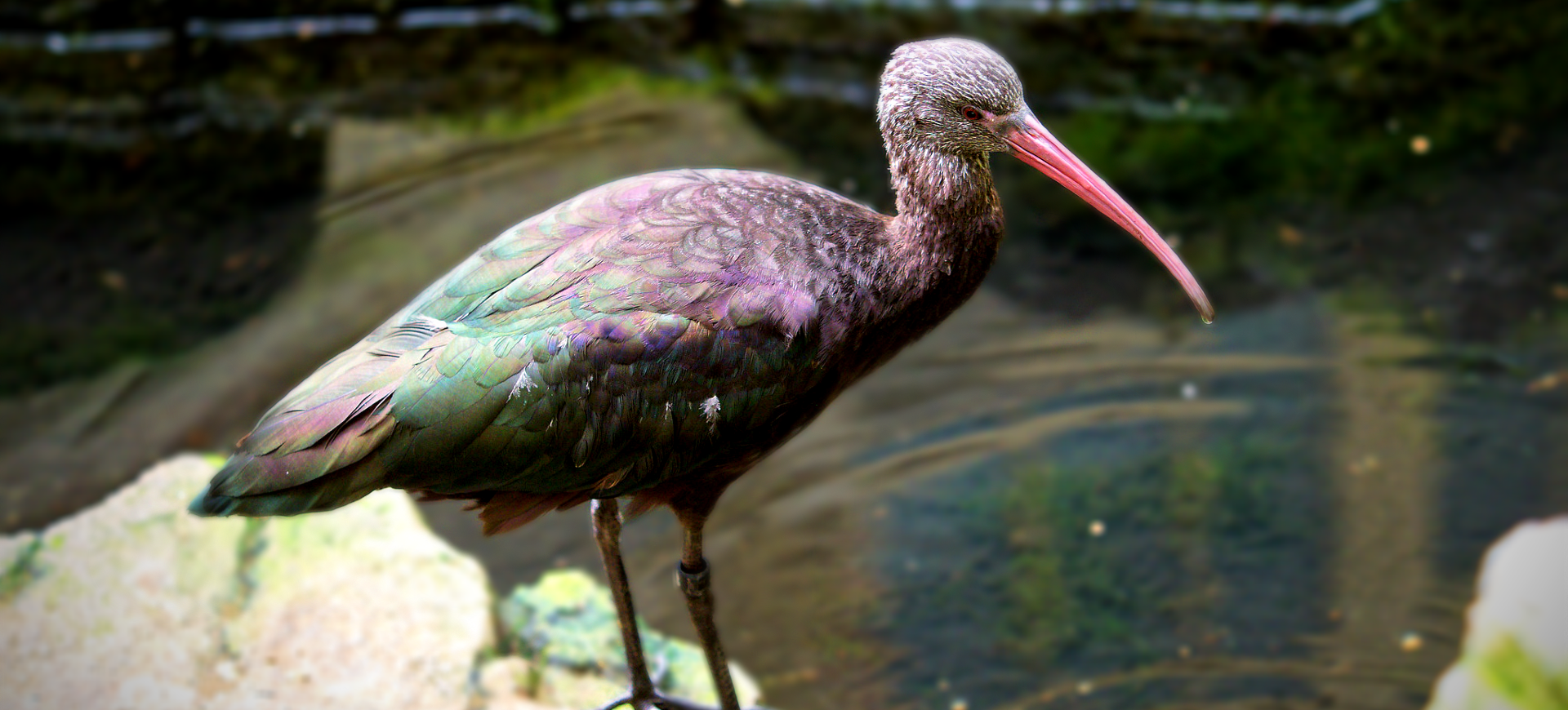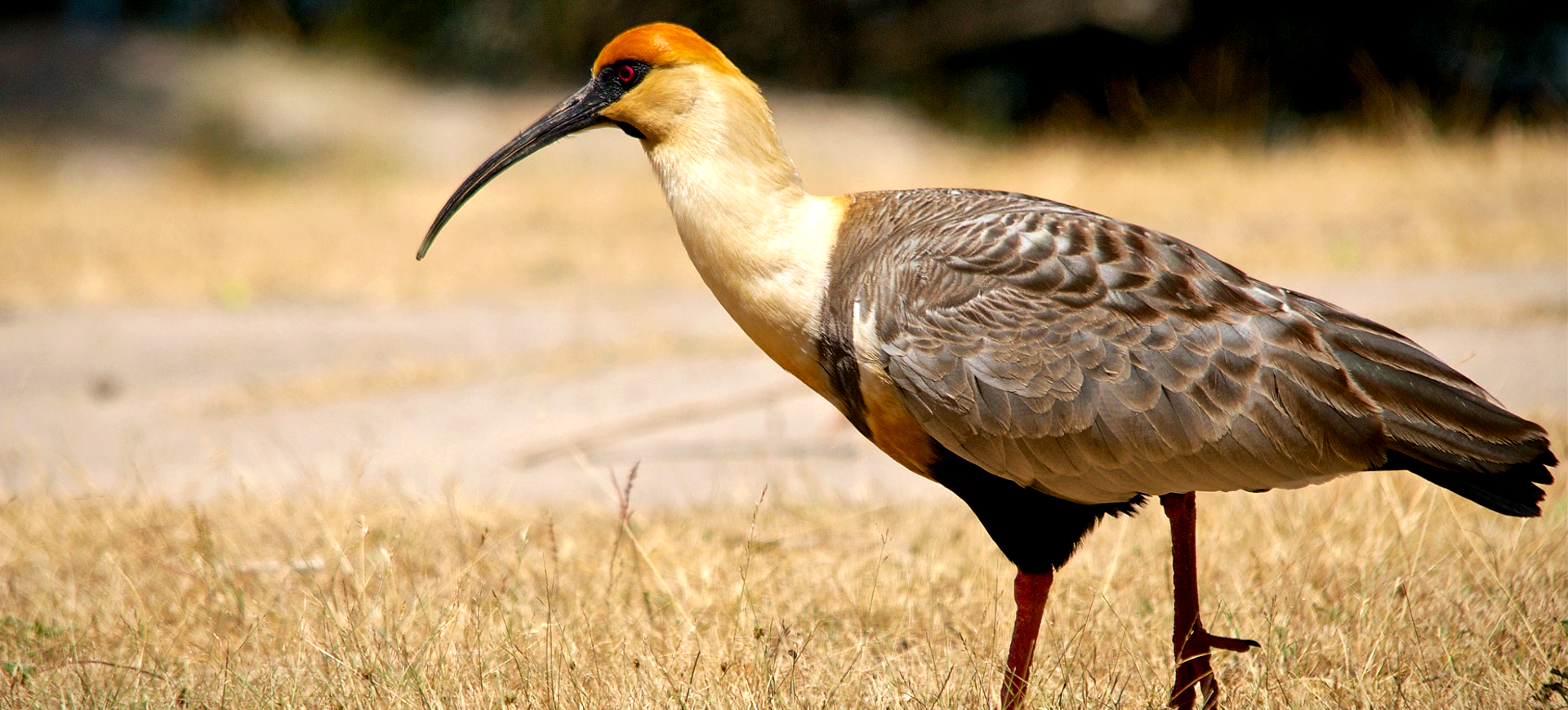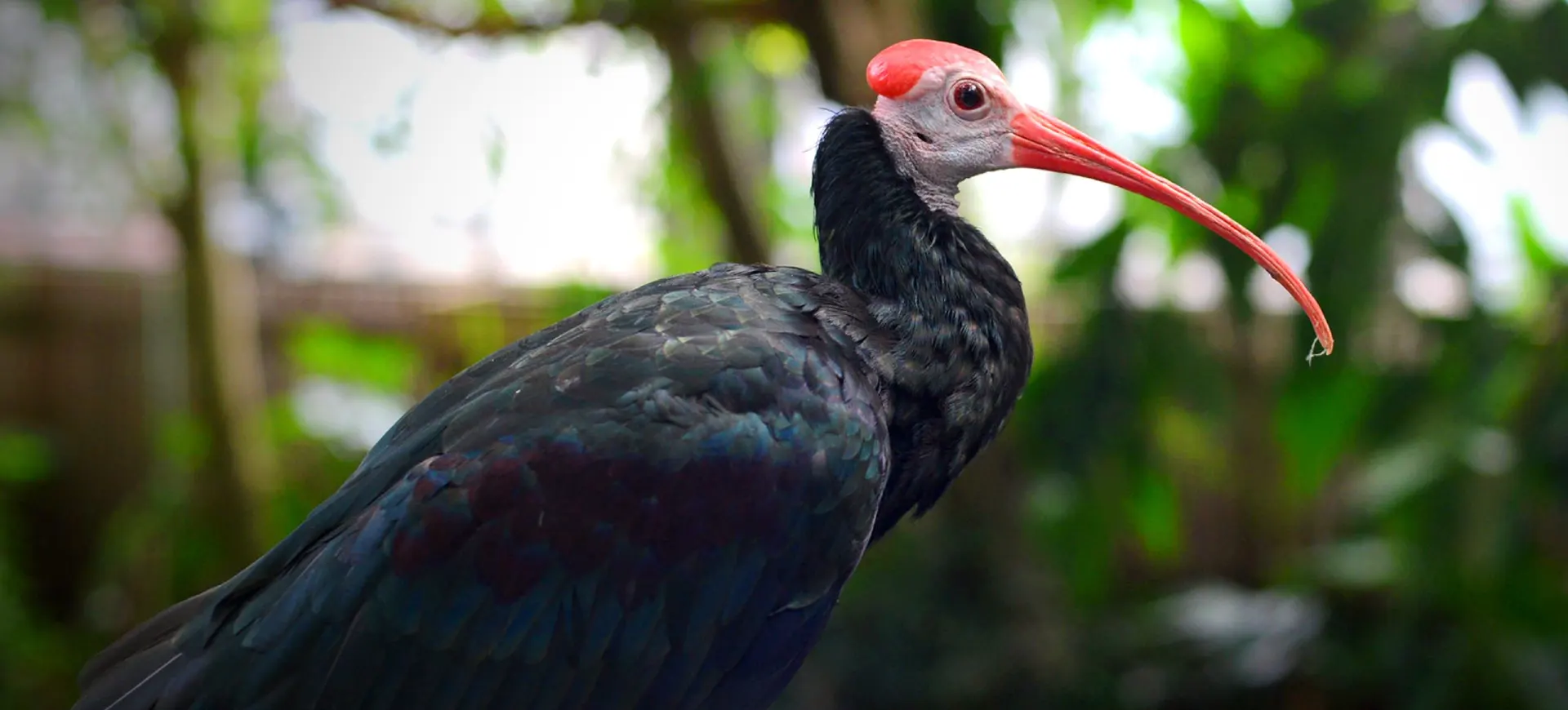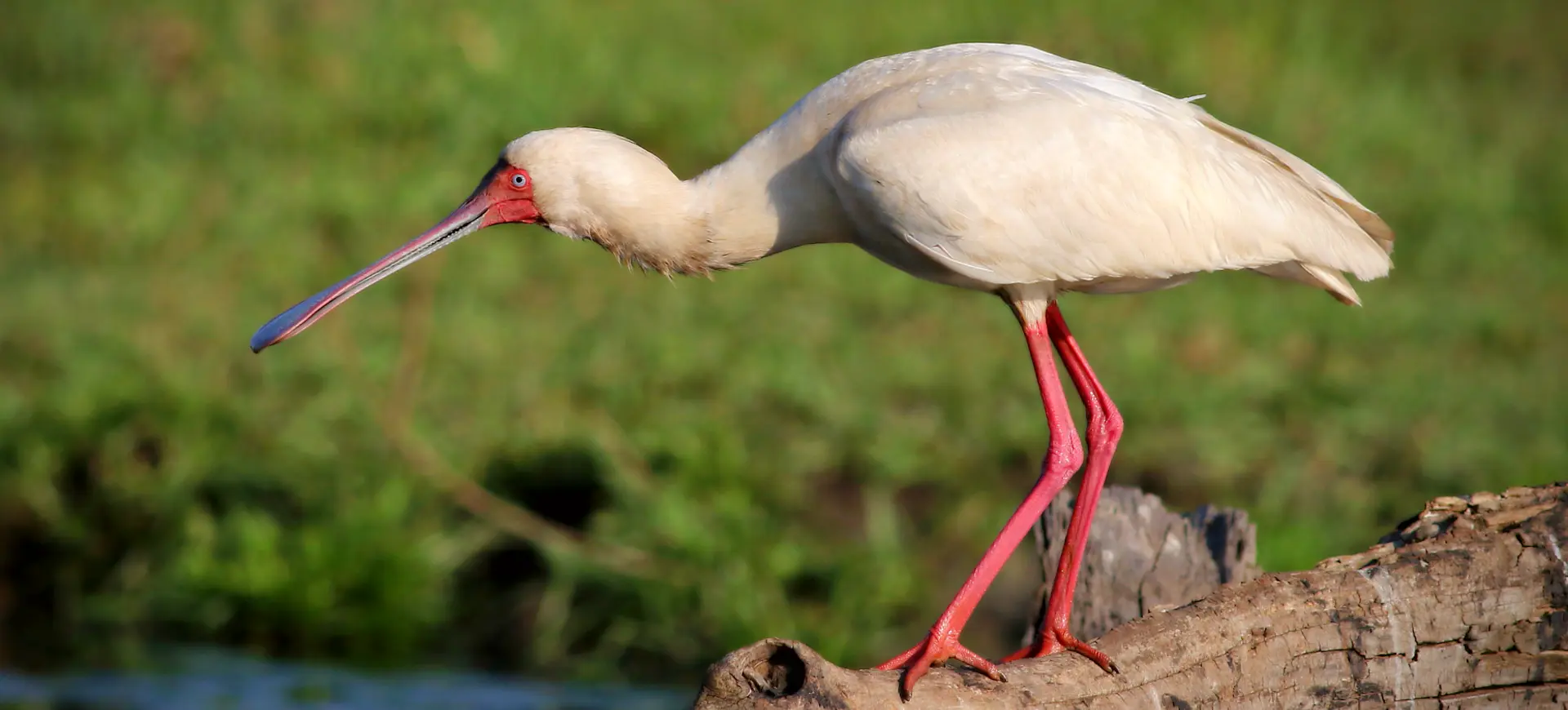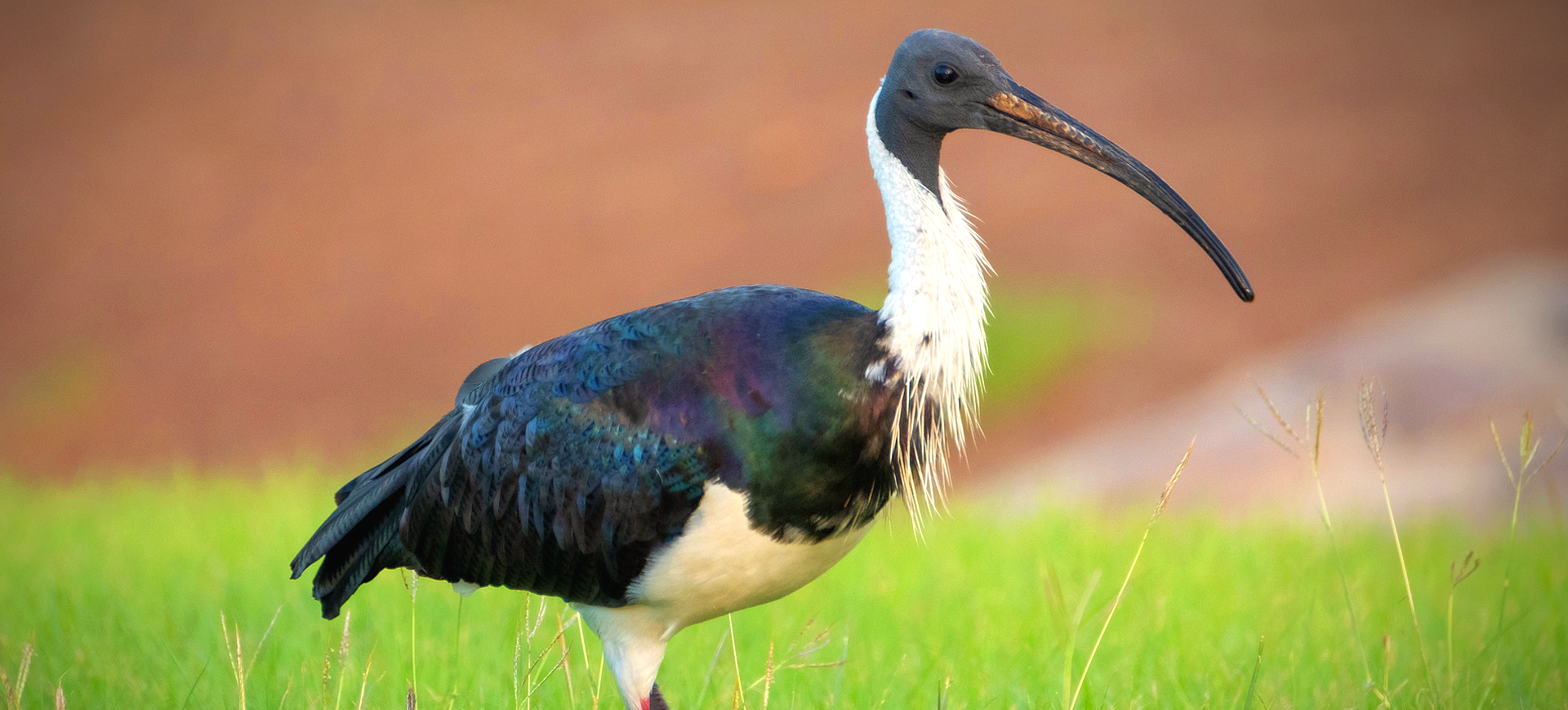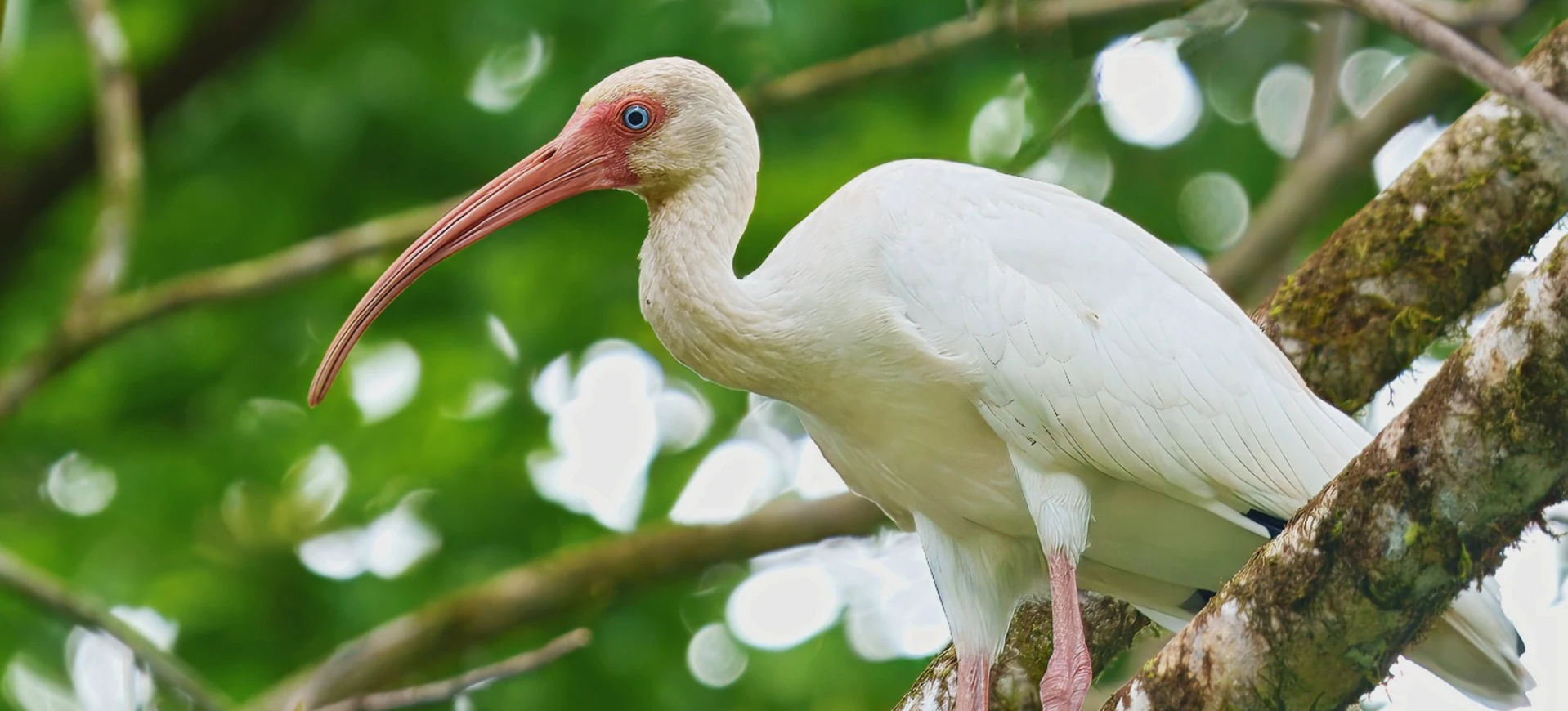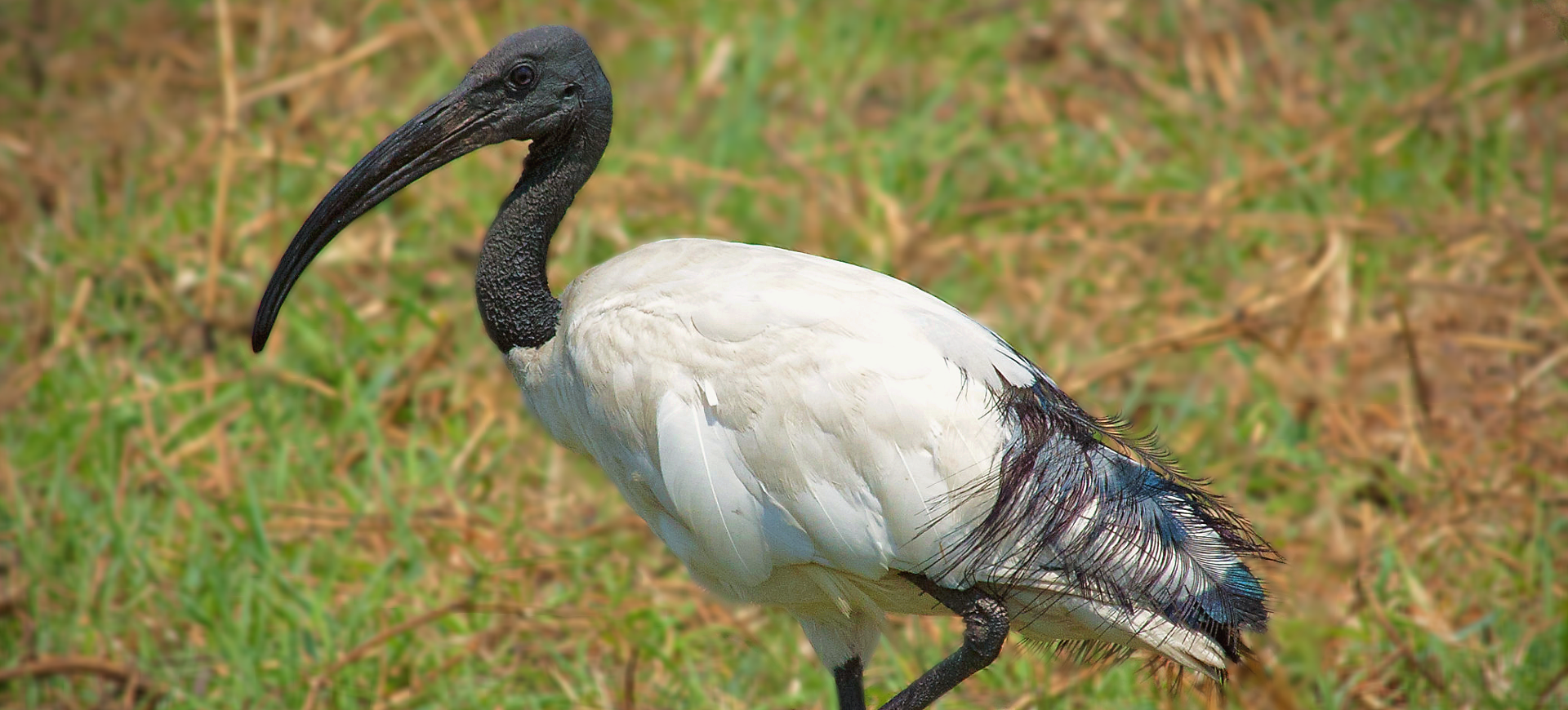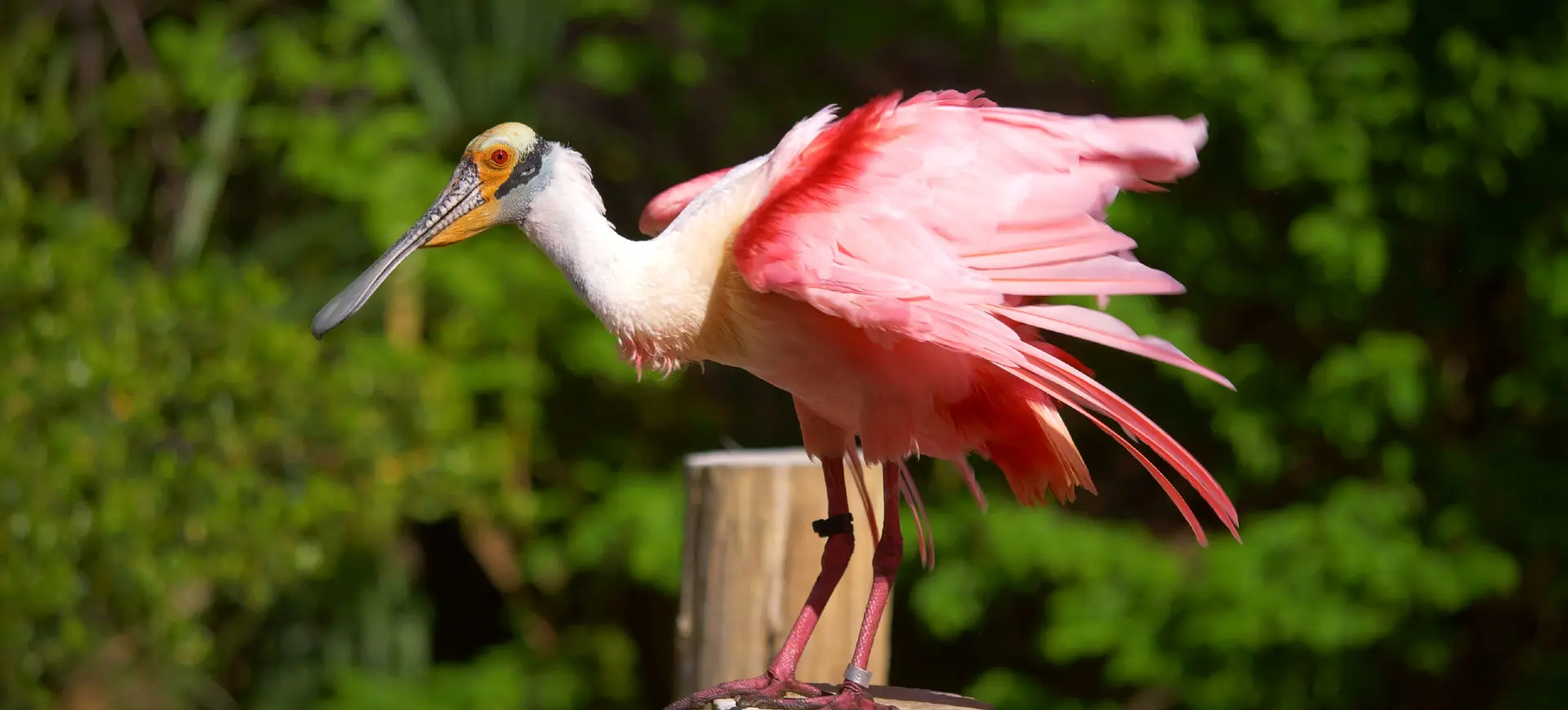Overview
The Scarlet Ibis (Eudocimus ruber) is a strikingly vibrant bird renowned for its rich scarlet plumage that contrasts sharply against the greenery of its natural habitat. This medium-sized bird has long legs and a slender, curved bill that is used adeptly for foraging in shallow waters. Native primarily to South American and Caribbean regions, the Scarlet Ibis inhabits various wetland environments, including mangroves, mudflats, and shallow bays.
Known for its friendly nature, the Scarlet Ibis is often seen in large flocks, which can number in the hundreds during breeding season. These gatherings are a spectacular sight, with the birds’ vivid red feathers creating a stunning visual display against the backdrop of their habitats. The coloration of the Scarlet Ibis comes from its diet, which is rich in crustaceans and other aquatic invertebrates that contain carotenoid pigments.
Birds play a significant role as predator and prey species in the ecosystem. Its feeding habits help control the population of small aquatic organisms, while the ibis itself is preyed upon by larger birds and mammals. The Scarlet Ibis’s presence is an indicator of the health of its environment, making it an important species for ecological monitoring.
Taxonomy
Kingdom
Phylum
Class
Order
Family
Genus
Species
Type
Physical Description:
The Scarlet Ibis is distinguished by its bright red plumage, which covers most of its body except for the black wingtips that are not easily visible when the bird is at rest. This vivid coloration is more intense in males and tends to be slightly larger than females. The bird’s long, down-curved bill is used effectively for probing mud and shallow water for food.
Young Scarlet Ibises are not born with red feathers; they are a mix of grey, brown, and white. The red color develops as they mature, a largely diet-dependent change. Their eyes are surrounded by a narrow ring of unfeathered skin, particularly noticeable during the breeding season.

Lifespan: Wild: ~15 Years || Captivity: ~25 Years

Weight: Male: 3.3 lbs (1.5 kg) || Female: 2.9 lbs (1.3 kg)

Length: Male: 22-24 inches (56-61 cm) || Female: 20-22 inches (51-56 cm)

Height: Male: 22-24 inches (56-61 cm) || Female: 20-22 inches (51-56 cm)

Wingspan: Male & Female: 20-23 inches (50-58 cm)

Top Speed: 30 mph (48 km/h)
Characteristic:
Native Habitat:
Scarlet Ibises are indigenous to tropical South America and the Caribbean islands. Their preferred habitats are coastal regions, where they inhabit mangroves, wetlands, and other areas with shallow standing water. These environments provide the ibises with abundant food sources and suitable nesting sites.
Food availability and safe nesting areas influence the bird’s habitat choice. During the breeding season, they often nest in mangroves, building their nests from twigs and leaves. The proximity of their habitats to human activity has exposed them to various environmental threats, including habitat destruction and pollution.
Biogeographical Realms:
Continents:
Diet:
Diet & Feeding Habits:
The diet of the Scarlet Ibis primarily consists of crabs, shrimp, and other small aquatic animals, which they find in the soft mud of shallow waters. This diet is high in carotenoids, responsible for the bird’s distinctive red coloration. They use their long, curved beaks to probe into the mud, feeling for prey.
In addition to aquatic prey, the Scarlet Ibis will occasionally consume insects, frogs, and small snakes. This varied diet is essential not only for their survival but also for maintaining their bright plumage. The birds are most active in their feeding habits at dawn and dusk, aligning their feeding patterns with the movements of their prey.
Mating Behavior:
Mating Description:
Scarlet Ibises have a fascinating mating process involving elaborate displays of plumage and ritualized behaviors. During the breeding season, males perform courtship displays, including preening, bill rubbing, and elaborate flights. These displays are intended to attract females and establish dominance hierarchies among the males.
Once a pair is formed, they mutually groom and build a nest together, often in a mangrove tree or a similarly safe location. The pair bonds are typically strong, and both parents are involved in incubating the eggs and raising the young. The breeding season varies depending on the geographical location but generally occurs during the rainy season when food resources are abundant.
Reproduction Season:
Birth Type:
Pregnancy Duration:
Female Name:
Male Name:
Baby Name:
Social Structure Description:
Scarlet Ibises are highly social birds, often found in large flocks. These flocks can consist of hundreds of individuals and are particularly prominent during the breeding season. The social structure within these flocks is complex, with hierarchies often established among the males, particularly about mating and territory.
Outside the breeding season, the flocks are more fluid, with birds joining and leaving between feeding and roosting sites. These communal gatherings are important for the birds’ social interactions and provide safety in numbers against predators. The Scarlet Ibis also shows communal behavior in nesting, with many pairs nesting near each other.
Groups:
Conservation Status:
Population Trend:
The population of the Scarlet Ibis is considered stable, with no significant immediate threats leading to a decline in numbers. This stability can be attributed to the wide range of habitats the species occupies and its ability to adapt to different environmental conditions. The bird’s presence across various South American and Caribbean countries further contributes to its stable population status.
However, like many species, the Scarlet Ibis faces threats from habitat destruction, particularly in areas where wetlands are being drained for development or agriculture. Their dependence on specific habitats for feeding and breeding makes them vulnerable to these changes. Conservation efforts are focused on protecting these vital habitats and ensuring sustainable land use practices in the regions where these birds live.
Population Threats:
Habitat destruction is the primary threat to the Scarlet Ibis, particularly the loss of wetlands and mangroves due to development and agricultural expansion. Pollution, particularly in water bodies, also poses a significant risk, affecting the bird’s food sources and nesting sites.
Another threat comes from hunting and trapping for the pet trade. In some regions, the birds are hunted for their meat and feathers. Although not a widespread issue, it does contribute to localized declines. Climate change and its impacts on coastal ecosystems also present a long-term threat to the species, potentially altering their habitats and food availability.
Conservation Efforts:
Conservation efforts for the Scarlet Ibis primarily involve habitat protection and restoration. This includes the designation of protected areas, particularly in key breeding and feeding sites, and efforts to restore degraded wetlands and mangroves. Environmental education and awareness programs are also crucial in promoting the protection of these birds, particularly in areas where they are culturally significant.
Research into the species’ ecology and behavior is ongoing, providing valuable information that guides conservation strategies. International cooperation, especially among the countries within the bird’s range, is vital for effectively conserving the Scarlet Ibis, given its transboundary habitats.
Additional Resources:
Fun Facts
- The Scarlet Ibis’s vibrant red coloration is not innate; it develops as they age, with juveniles starting grey and turning red due to their diet rich in carotenoids.
- They are the national bird of Trinidad and Tobago, symbolizing the beauty and warmth of the Caribbean.
- The species exhibits a unique behavior known as “beak clattering,” which is part of their social and courtship rituals.
- Despite their bright color making them conspicuous, their red feathers blend well in the reddish-brown mud of their natural habitat, aiding in camouflage.
- The Scarlet Ibis can change its diet based on availability, shifting from crustaceans to insects, fish, and even small amphibians.
- Scarlet Ibises fly in a V-formation, a technique that conserves energy and aids in long-distance travel.
- They have a highly specialized bill that is thin, long and curved downwards, perfect for probing in mud and shallow water for food.
- These birds are known for their synchronized flying patterns, which are a visual spectacle and demonstrate complex social behaviors.
- The Scarlet Ibis is not just restricted to wetlands; it can also be found in agricultural fields and urban areas near water bodies.
- They are one of the few bird species whose entire body is almost one solid color without significant variation or markings.









